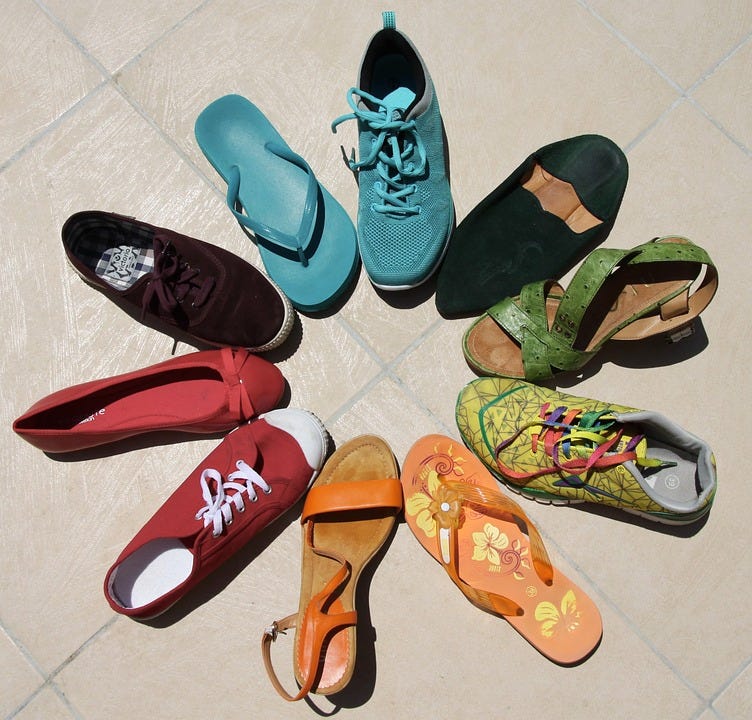Fact: Teams solve problems faster when they’re more cognitively and consciously diverse.

First, a quick definition… “Cognitive diversity? Please, kindly explain.”
“Cognitive Diversity” is literally that — the deliberate, collaborative process within a group or team environment to empower and/or tap knowledge, “brainpower,” and the diverse perspectives from that group over a set of challenges or a problem. In other words, the more the merrier when it comes to solving problems — and that goes for diverse perspectives and experiences as much as it includes individual people. A pretty simple concept to grasp…
For me, however, “cognitive diversity” also should embody the concept of “conscious diversity”, i.e., the conscious or deliberate action of bringing multiple, diverse perspectives into the equation from a truly heterogeneous group, e.g., women, different ethnic groups, immigrants, the disabled, seniors, and the like. In this time and era of greater diversity and inclusion, the concept of “conscious diversity” has never been more relevant.
“Research has shown that the best performing teams are diverse teams. The power of diverse perspectives is such that diverse teams outperform non-diverse teams… and they outperform even more capable teams.” — Sallie Krawcheck, CEO and Co-Founder of Ellevest, a digital financial advisor for women launched in 2016.

In your typical workplace, there are a lot of factors that drive a team of people to problem-solve efficiently — and by efficiently I mean “creatively.” In no specific order of chronology or importance, those include:
- Brainstorming sessions
- The pressure of meeting project deadlines
- The need for being “creative”
- The day-to-day challenges in a business that must be met
- Even some amount of caffeine, nicotine, or alcohol can come into play
- One helluva “eureka” or “ah-ha” moment!
Because each of us is shaped differently by our environment and life experiences, we collectively develop different definitions of what a problem is and what we choose to do about it. This kind of diversity in how we think and perceive things is referred to as “Cognitive Diversity,” and it’s a critical possession for when it comes to forming teams that work together to get things done.
Given how unique each one of us are, Cognitive Diversity, then, doesn’t seem so hard to implement or come by, does it? Not necessarily true… There’s a thing called functional bias, which is why birds of a feather flock together, and we tend to look for solutions that are aligned with how we think about doing things. In essence, when we limit ourselves to the people who think more or less like us, we’re displaying a functional bias. And often, therefore, the results are predictable.

But this is where the overlay of “conscious diversity” can also lend a hand and becomes relevant.
In life and in problem-solving, people deal with new information, facts, and perspective. They do so whether or not they draw upon their own past experience or develop new ideas based on input from everyone else. But all-in-all, it has been found that teams with higher cognitive diversity — who also practice “conscious diversity” — tend to perform better than teams functioning with lower levels of each. In groups with people who have different approaches, experiences and perspectives, there’s a larger idea pool to choose from and work with, whereas within like-minded people groups, there are few ‘new’ ideas or experiences to draw from — which is why if a challenge is a curveball for one person in a low-diversity group, chances are it’s a curveball for all/most of them.
And this kind of collective diversity is profitable! For example, diversity through the inclusion of more women in a problem-solving team or group has shown to have remarkably positive results. According to McKinsey & Co., “Companies with high levels of women and global diversity among executives boasted returns on Equity (ROE) 53% higher than other companies. They also enjoyed earnings before interest and taxes (EBIT) 14% higher than other companies.” And First Round Capital VC firm found that, “Founding teams with females performed 63% better than those with all males.”
Results and performance within groups and organizations tend to be even higher when the diversity net is further broadened. The inclusion of even more diversity in the workplace, via immigrants, people of color, veterans, seniors, people in the LGBTQ community, etc., tends to push organizational performance results even further.
When forming teams or groups within an organization’s structure, “conscious diversity,” therefore, is a logical path forward. It ensures the enlargement of the pool of ideas to tap from and work with, and it seconds the opportunity to learn from and hear the opinions of divergent thinkers. And while many people find some degree of comfort in conformity, when organizations have a strong, homogenous culture (e.g., an engineering culture, an operational culture, or a relational culture), they inadvertently stifle the best ideas that can emerge from groups.
If organizations embrace cognitive diversity — and “diversity” at large — for a better workplace in new, uncertain, challenging scenarios, then they need to create an environment which encourages divergent thinking: one which allows diverse groups of people to explore the depth of their experiences and differences in opinion. The results will speak for themselves.


